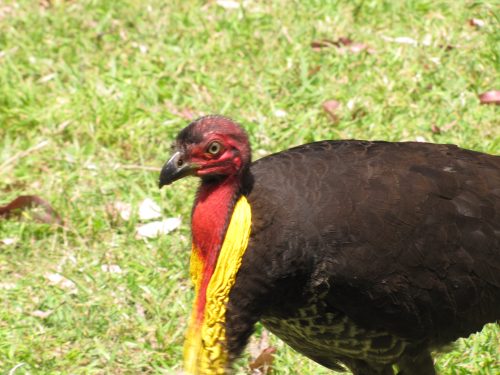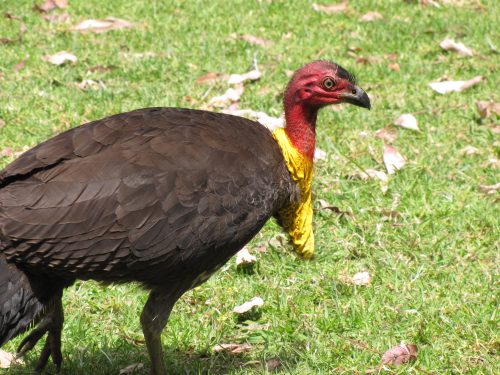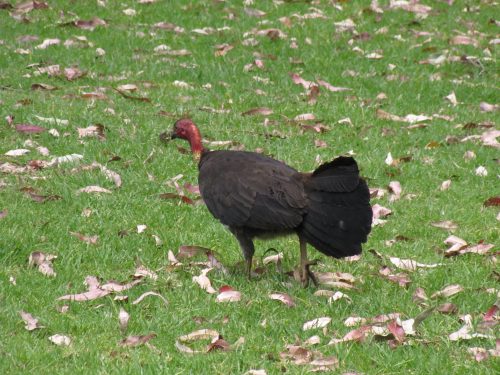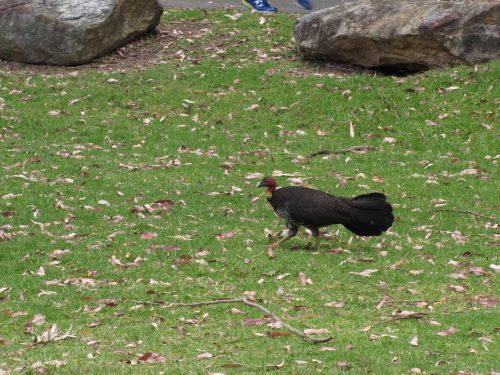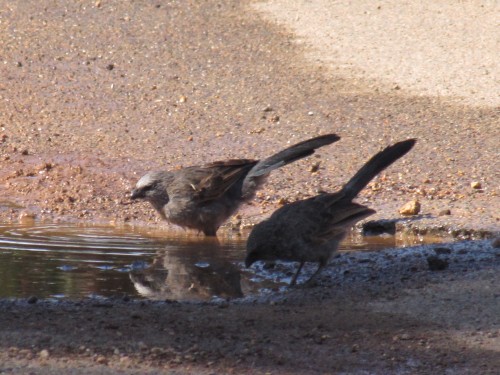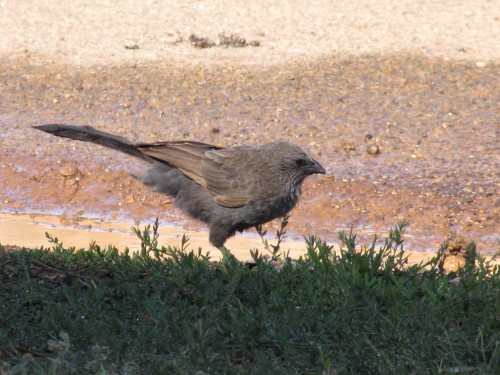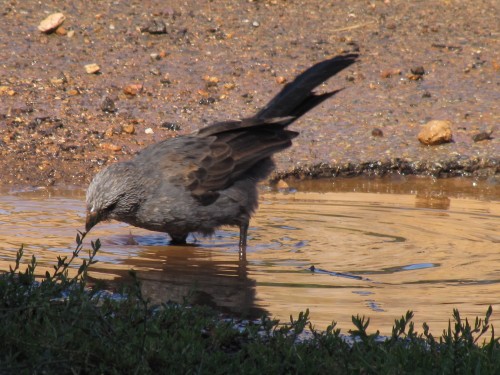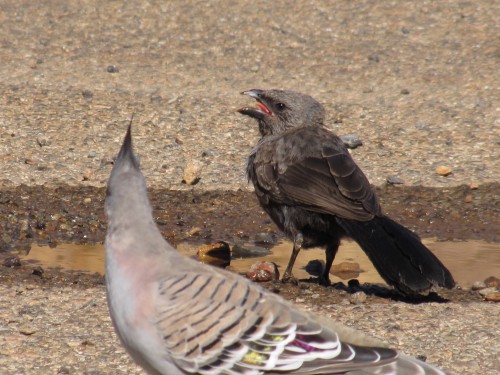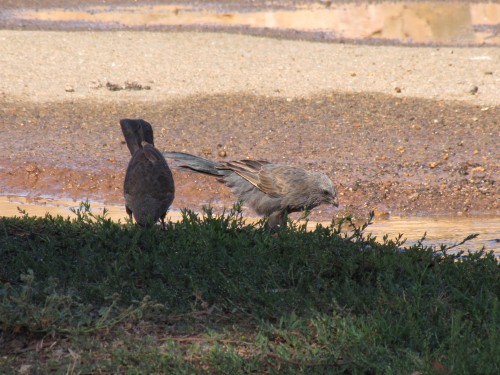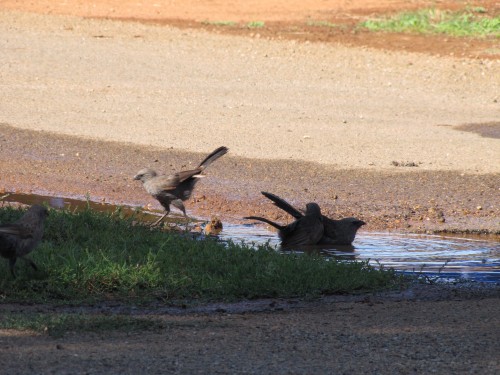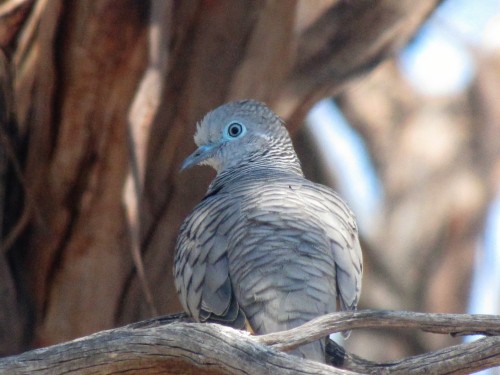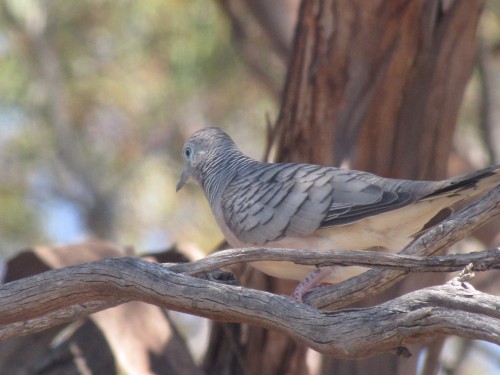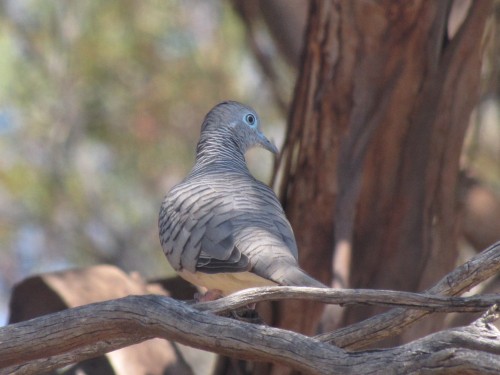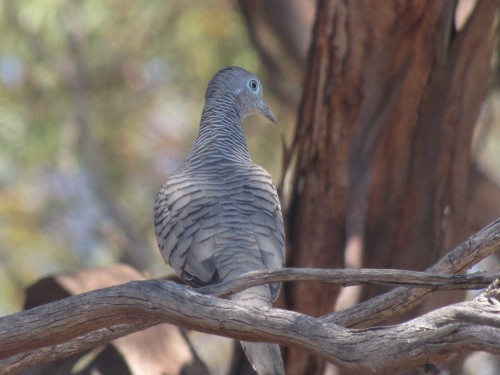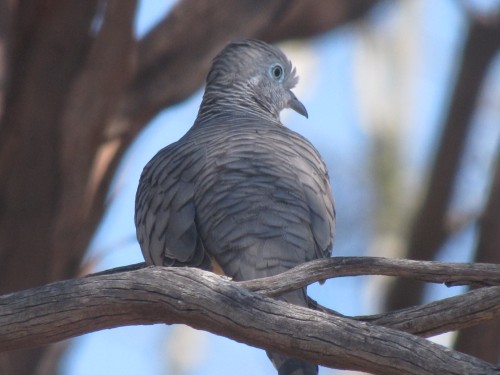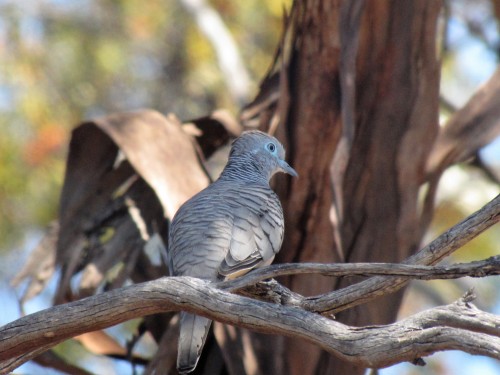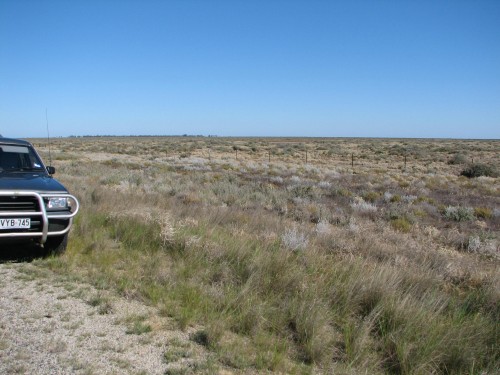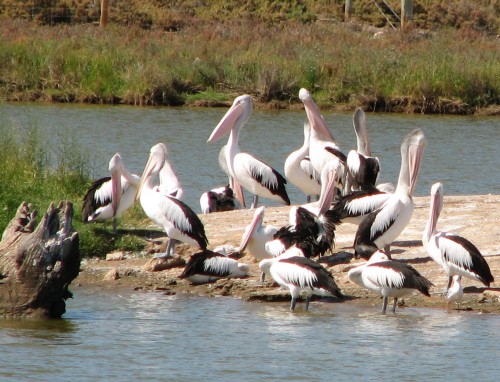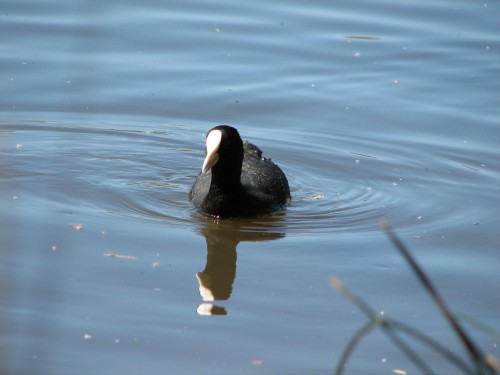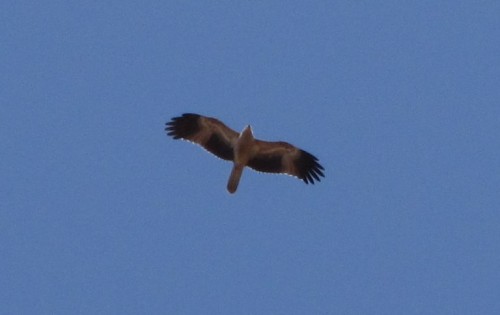Brush Turkeys up close
On many occasions here I have written about some of the birds I have seen and photographed while on visits to family in Sydney. One of our favourite places to visit while in Sydney is the Lane Cove National Park, just a short distance west of Chatswood in the northern suburbs, and only a ten-minute drive from my son’s home.
When we visit we usually take a picnic lunch, or if only going in the afternoon, we certainly take the makings for afternoon tea, including a few biscuits, or some fruit. We like to set up our folding chairs and make a cuppa, in a spot where we can see the river, as well as a good view of the trees. Such spots usually provide us with good birding as well.
If you stay in this park for a few hours or visit frequently, the chances of seeing a good range of local and visiting birds are very high. This park protects a large section of remnant scrubland. While there are roads and tracks through the park, as well as clearly defined picnic areas with barbeques, picnic tables and other public facilities, the vegetation left preserved gives the visitor a good impression of the natural environment as it existed before settlement in the late 1790s.
On this particular visit last October, my wife and I had a few hours leave from looking after our grandchildren. We set up our chairs in a good position and proceeded to eat our lunch. We had hardly started eating our sandwiches when we were robbed. Not only were the Laughing Kookaburras cheeky, so were the resident Australian Brush Turkeys, shown in the photos in this post.
Two of them came mooching around while we were having a post-lunch cuppa. They were obviously on the take and came up within a few centimetres of where we sat. We don’t feed birds that are supposedly wild. These individuals were behaving like they often get handouts of human food. Once they realised that we were not going to comply with their wishes, they skulked off elsewhere. They probably tried the same trick on other people enjoying a picnic.
Further reading:
- Lunch snatching birds
- Five reasons to love Brush Turkeys – from the ABC website
Apostlebirds just puddling around
Over recent post I have written about some birding I did while visiting family in Peterborough in early March. Peterborough is in the mid-north of South Australia and is just over three hours drive from home in Murray Bridge which is south-east of Adelaide. We were staying with family and while there my wife attended a quilting seminar.
Early one morning during our stay I headed off to do some birding before the heat of the day. One of the places I often visit while in the town is Victoria Park. This park has an artificial lake and is adjacent to the caravan park and the swimming pool. It is one of several quite reliable places to see Apostlebirds.
Apostlebirds are quite common in some other states, especially New South Wales. In South Australia, however, the species is uncommon. It can only be found in about a dozen or so locations in the whole state. Recent observations could indicate that it is becoming more common and is extending its range.
There appear to be several family groups in and around the town of Peterborough. These groups can be fairly mobile over quite a range covering most of the town and the immediate environs. One of the most reliable spots seems to be around Victoria Park where I took these photos, and in or near the grounds of the hospital.
As we were approaching the town late in the afternoon of the previous day, we encountered a heavy downpour as we drove along. I actually had to reduce the car’s speed to drive safely. The next morning, there were still quite a few puddles left around town, including a few large ones in the park. The Apostlebirds were having a great time paddling in the water, as were several other species. I didn’t stay long enough to see if they took advantage of the puddles to make one of their mud nests. I guess that this group didn’t really need to because they have a constant supply of mud from the edges of the lake only 20 metres from where these shots were taken.
Peaceful Doves in our garden
I have written about Peaceful Doves on a number of occasions on this site; check out the articles I have linked to in the ‘Further Reading’ section below. I must admit that I love seeing and hearing this small dove in the Australian bush. They are aptly named and their gentle call is so part of the Australian environment, especially in the drier parts of the country.
Over the 30 plus years, we have lived in our present home, I have recorded this species on quite a few occasions. In the last year or so their visits have become far more regular. In fact, at present, we probably hear or see them on most days of the week. It is still too early to call this a resident species, but it must be close to that. Late last year we are fairly sure that they could also now be added to the list of birds observed breeding on our five-acre block of land. Although we saw them mating, we never found a nest.
More recently – perhaps over the last two months, we have often seen two or three birds come to our bird baths. Then on one occasion we had at least six birds present. I would like to think that this sighting included the successful breeding outcome, and that this little flock is actually one family of birds.
On other occasions, we have only one bird visiting the bird baths for a drink. On one of those occasions I took the bracket of photos shown in today’s post. All of these photos are of the same bird. Although I like this series of shots, the bird in question refused to turn around and face my camera. Some days the birds cooperate, and on other days they just do as they please. That’s the delight – and the frustration – of nature photography.
Further reading:
Surprising waterbirds of the dry country
Dry Country
I love the dry country we have here in Australia. Most of my birding has been done in areas of Australia which have an average annual rainfall of under 250mm (10 inches). Some of this country is marginal farming country, sometimes cereals, and often sheep and cattle. I grew up on such a farm and still cherish my childhood adventures in the mallee bushland near my home.
On the road again
Earlier this week my wife and I travelled from our home in Murray Bridge, South Australia, to Sydney. We are currently staying with my son and his family. The grandchildren love having us stay with them. At ages 7 and 4 they are already showing an interest in the birds they see in their garden, and in the parks they visit. My interest has rubbed off on them.
Missing out
The car journey from home to Sydney is over 1300km, two long days of driving. In future, we think we might take three or four days to get here, stopping more frequently at the many interesting places along the way. There are many national parks, reserves, botanic gardens and bushland on this route and we just have to drive right on by, often with a groan of despair at what we might be missing.
Hay Plains
One of the places we drive through is the large rural town of Hay, located on the banks of the Murrumbidgee River. The birding along this river can be excellent. But before we get to Hay we have to pass through about 130 kilometres of the Hay Plains, a dry region consisting of few trees, much saltbush and some grassland. I find this drive to be fascinating because it often reveals odd collections of birds. On one trip we saw hundreds of Emus grazing on the low vegetation. On another trip, after heavy rain in that area, we saw thousands of ducks, mostly Australian Wood Duck and Grey Teal. They were taking advantage of the long stretches of water still lying along the edges of the highway.
Surprising Waterbirds
As we travelled along at 110kph my wife suddenly pointed out an interesting sight. It was a gathering of dozens of waterbirds: Australian Pelicans, White Ibis, Straw-necked Ibis and Yellow-billed Spoonbills. Harassing all of them from only several metres overhead was a Swamp Harrier. As we rushed by I didn’t have time to take in the presence of any other birds. I am sure that if we had had the time to stop, I would have recorded several species of ducks, perhaps coots, swamphens, egrets, herons and lapwings, cormorants, and maybe even some crakes and rails.
Irrigation
This was a very surprising collection of birds for what is essentially very dry country. The reason for their presence is explained by the presence of wide irrigation channels. The water is pumped from the nearby Murrumbidgee River into a series of channels, some of which are 5 or more metres wide. The water is then used to either flood irrigate large expanses of land, or pumped through long, overhead sprinkler systems. This area grows large amounts of hay, wheat and cotton, all irrigated from the channels. The fact that this also provides a perfect environment for numerous birds is a pleasant by-product. Further east there are large expanses of fruit orchards as well.
Further reading:
- Australian Pelicans overhead
- White Ibis at Dubbo Zoo
- Straw-necked Ibis Adelaide Zoo
- Yellow-billed Spoonbills and the birth of a birder
Whistling Kite overhead at Pangarinda
Last week I wrote about the Tree Martins I saw and photographed at the Pangarinda Botanic Gardens near Wellington in South Australia. We were having an afternoon relaxing in the gardens to celebrate my wife’s birthday. You can read about the Tree Martins here.
While we were having a cuppa and some birthday cake with our friends I was taking note of all the birds I saw and heard. It was a lovely sunny day with a cooling breeze making the afternoon very pleasant indeed.
During the afternoon we saw and heard many birds, including plenty of New Holland Honeyeaters, both Red and Little Wattlebirds, Rainbow Bee-eaters, White-browed Babblers and even several Brown Quail. Go to the reading list at the end of this post for a link to the article about the quail.
While we were sitting at the picnic table having our afternoon cuppa a Whistling Kite soared overhead a number of times. I managed to get one reasonable photo, the one shown above. I still have yet to master the art of taking photos of birds in flight. The other shots are either too blurry, or too far away to be useful.
Whistling Kites are quite common along the Murray River in South Australia. The botanic gardens at Wellington are barely 500 metres from the river and possibly even closer to some of the reed-covered banks nearby, so I was not surprised to see one overhead. In fact, this species is common throughout most of mainland Australia where suitable habitat exists. Their preferred habitat includes open woodlands usually near water, along creeks, rivers, lakes and swamps where there are suitable nesting and roosting trees. They occasionally can be seen in Tasmania too.
Further reading:
- Tree Martins all a twitter
- Calling up a Brown Quail
- Birds and plants of the Pangarinda Arboretum (this was the early name for these gardens).
